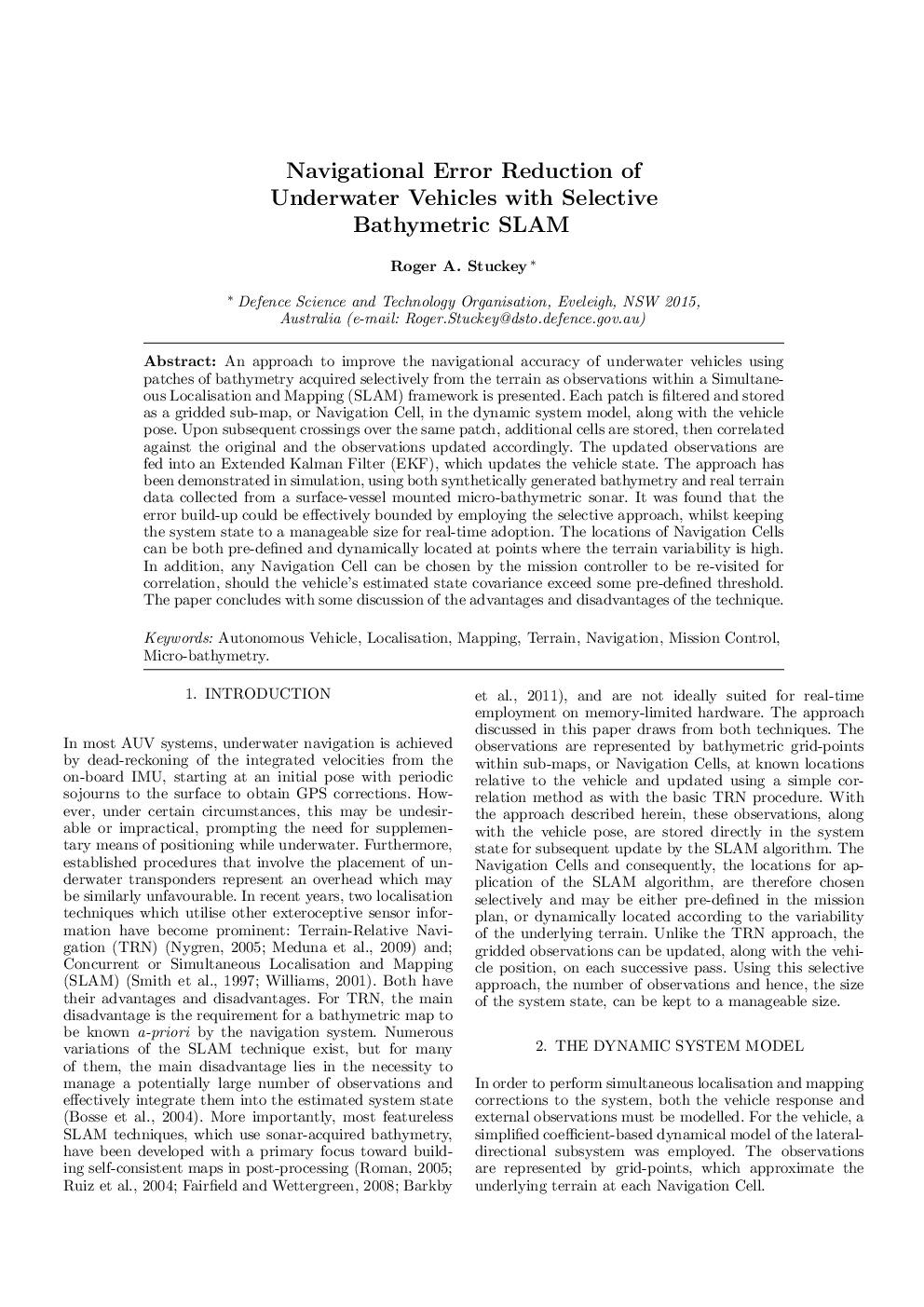| Article ID | Journal | Published Year | Pages | File Type |
|---|---|---|---|---|
| 719231 | IFAC Proceedings Volumes | 2012 | 8 Pages |
An approach to improve the navigational accuracy of underwater vehicles using patches of bathymetry acquired selectively from the terrain as observations within a Simultaneous Localisation and Mapping (SLAM) framework is presented. Each patch is filtered and stored as a gridded sub-map, or Navigation Cell, in the dynamic system model, along with the vehicle pose. Upon subsequent crossings over the same patch, additional cells are stored, then correlated against the original and the observations updated accordingly. The updated observations are fed into an Extended Kalman Filter (EKF), which updates the vehicle state. The approach has been demonstrated in simulation, using both synthetically generated bathymetry and real terrain data collected from a surface-vessel mounted micro-bathymetric sonar. It was found that the error build-up could be effectively bounded by employing the selective approach, whilst keeping the system state to a manageable size for real-time adoption. The locations of Navigation Cells can be both pre-defined and dynamically located at points where the terrain variability is high. In addition, any Navigation Cell can be chosen by the mission controller to be re-visited for correlation, should the vehicle's estimated state covariance exceed some pre-defined threshold. The paper concludes with some discussion of the advantages and disadvantages of the technique.
